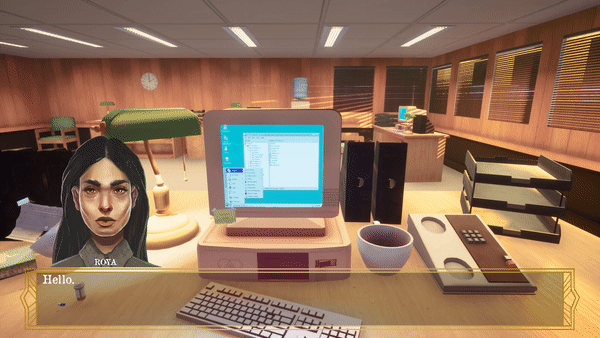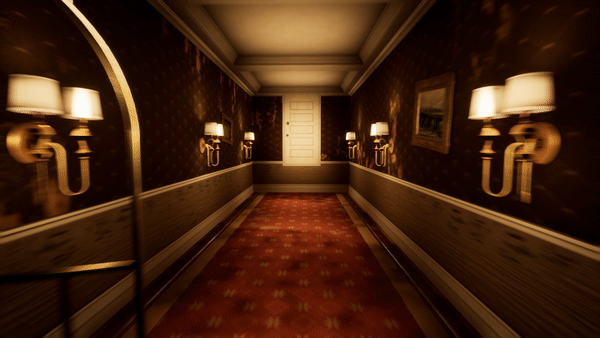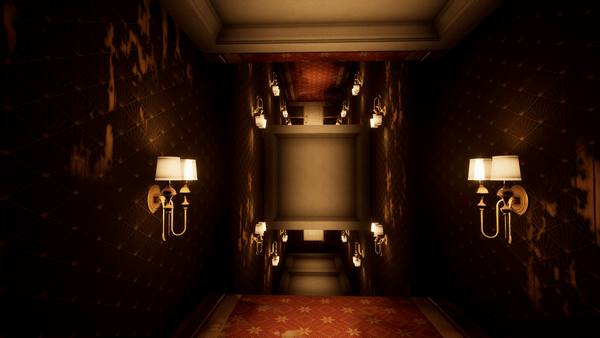


Grief
Game Design/
Narrative
Grief is a First-person Puzzle Platformer where you play as Roya, who recently lost her father struggles through the 5 stages of grief. Each of the first 4 stages being represented as a Puzzle Level in Royas dreams. I worked on the narrative, level and game design as well as writing the story, dialogue and coming up with the concept.
Trailer

Story Synopsis
Roya has just lost her father and with that, the person closest to her. Roya not only has to deal with grief from losing her father but also guilt caused by their strained relationship and for inadvertently causing his death due to neglect. Every night she now has dreams related to what stage of grief she is in. While during the day talking to her coworker, moving her forward in the process while Roya avoids the calls from her sister. This culminates in Roya reaching acceptance, finding peace with her dad and contacting her sister.

Backstory
Roya was raised by her single father Farid. Despite harsh circumstances they were really close since Farid always was a loving father who tried his hardest to provide the best for his daughter. Farid's sight got drastically worse as he aged and he would become somewhat dependent on Roya for long distance transportation. Determined to make something of herself, Roya moved to the city to pursue a career but promised to visit Farid as often as she could. As time went on the visits became less and less frequent making Farid feel' more and more lonely. When Roya didn't show up for his birthday, a rift would appear in their relationship and they wouldn't speak for months. One foggy day Farid got a notice from the library that some of the books that Roya had left at his place were overdue and she would get a fee if they weren't returned within the day. Farid tried to call Roya but she would missed all of his calls due to her busy schedule so Farid decided to return them himself. Unfortunately due to the poor visibility he would drive off a bridge ending his life.

Dialogue
I had the idea of switching between dream and reality in the game. This is to give the player a more holistic view of Royas life. When Roya is awake, the player can experience a part of her day at the office. Here is where most of the games dialogue is present through conversations with her coworker. I wrote the dialog in the game to give a more direct view into Royas situation this is in contrast to the dreams that give the player a more metaphorical view. This parallels the human conscious and subconscious with how they're both important for the whole.


Bargaining Level/Puzzle
The Bargaining level is a Puzzle level that takes place in Royas dreams when she's dealing with bargaining. The level takes the appearance of a library that the player must rotate, using miniature models of the room placed behind the walls to get to the exit. When designing the puzzle, I was drawing parallels to the themes of bargaining with the aspect of taking control of the situation/room and then trying to turn it to your benefit. The room starts off in a flipped state, with the exit being visible but inaccessible. To get through the first threshold, the player must return the room to a state of normalcy, having the floor below them, the roof above and the furniture in positions with accordance to the laws of gravity. This leads the player up the staircase where they now have access to a room with another room model. From this point, the exit is right across the room, but there doesn't appear to be an obvious way of getting there. This is until the player realizes that the large pillar in the room actually is hollow, working as a bridge that the player can use to reach the exit. This is hidden in plain sight with keen-eyed players being able to see this in the models right from the start. By this the puzzle tells a story of bargaining through gameplay, making the player first view things normally only to then have to change to a new unclear perspective that was right in front of them all along. The library look also draws parallells to the story with Royas overdue books causing her father to get into the fatal car accident when he tries to return them for her.

Simple sketch I made of the core aspects of how the mechanic for the puzzle would work.


More In-depth sketch I made of how the model interaction works. Showing what inputs do while using the model as well as what inputs are taken away while interacting with the model.
Early 2D sketch that I made of how the movable cube would look. Some changes have been made to the staircase but the puzzle aspects of the cube remain functionally the same.

.png)
Early 2D sketch that I made of how the Exterior of the cube would look, in other words the things behind the cube that stay in the same fixed location regardless of how the cube is rotated. This shows where all the rooms with the models and the exit are located during the duration of the level.
White box I made of the level


Final result of the main mechanic of the bargaining puzzle.

Denial Puzzle
When coming up with the mechanic for the denial puzzle I thougth up the power to switch between walking on the floor and on the roof connecting with the avoidance associated with denial. This together with the player having to run from a void chasing them connects to the themes even stronger. Originally the switch ability was going to be connected to a key but during a play test we noticed the player could achieve a similar flip by moving the mouse forwards or backwards enough since a limit to the camera movement hadn't been set. We thought this was a more intresting way of switching between floor and roof as figuring out the mechanic became part of the puzzle. We later reused this mechanic for the depression level.


This is the final puzzle for the denial level. At first there appears to be two paths with each having a door at the end. However, the player will find out that both of them are locked. This is where the player has to find the hidden door between the two paths. The hidden path is placed on the way back from the path the player is most likely to pick, secondly making the player intuitively explore the other options first and then to have the real exit placed where its easy to find from that point onwards.
Early sketch of the puzzle showing how it should look and function while revealing the exit that isn't initially visible to the player.

